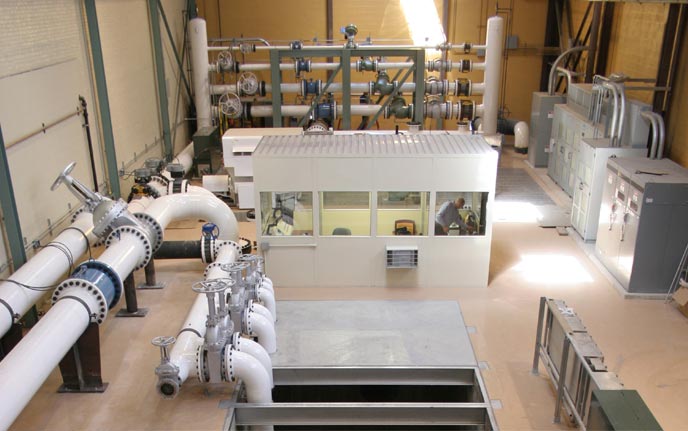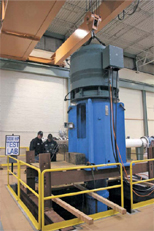Often all that is needed to improve a pump’s reliability and performance is to provide a high quality inspection and repair. Over time a pump may have been repaired by more than one service provider with varying levels of engineering and technical experience. Tolerances may have been opened up, fits and concentricities may have been lost and materials may have been changed, all of which contribute to reduced performance, loss of reliability and more frequent repairs.
This article highlights the opportunity seized by a coal-fired power station to upgrade a Westinghouse Vertical Pump during the repair process.
Background:
The Power Plant’s Unit #4 “Alpha” Circulating Water Pump was scheduled for repair and in the process of removal, the sister pump #4 “Bravo”, exhibited severe vibration and failed in a manner which was believed to have been a result of a broken shaft. The Alpha pump was put back into service and the Bravo pump removed and sent to the repair facility for inspection and emergency repair.
Observed Pump Condition:
The general condition of the Bravo pump when received at the repair facility was much worse than anticipated with the top column flange broken about half way around. The entire pump had been hanging from this broken joint leaving a gap of ¼” to ½” at the opening. The keyed coupling (internal to the pump) used to join its two shafts was broken in several pieces, the shaft journals were severely worn to one side and the impeller vanes & suction bell liner surface were also severely worn as expected, considering the significant pump damage.

After disassembly of the pump, it was also observed that the shaft enclosing tubes had spun in their fits due to not being fitted with any anti-rotation mechanism. This rotation caused damage to the ‘O’-ring fit areas at both ends of the enclosing tube assembly resulting in loss of proper flush water supply to the pump bearings below the packing box. Another issue observed during inspection was that part-to-part alignment of major pump components utilized dowel pins, which are very difficult, if not impossible, to verify.






